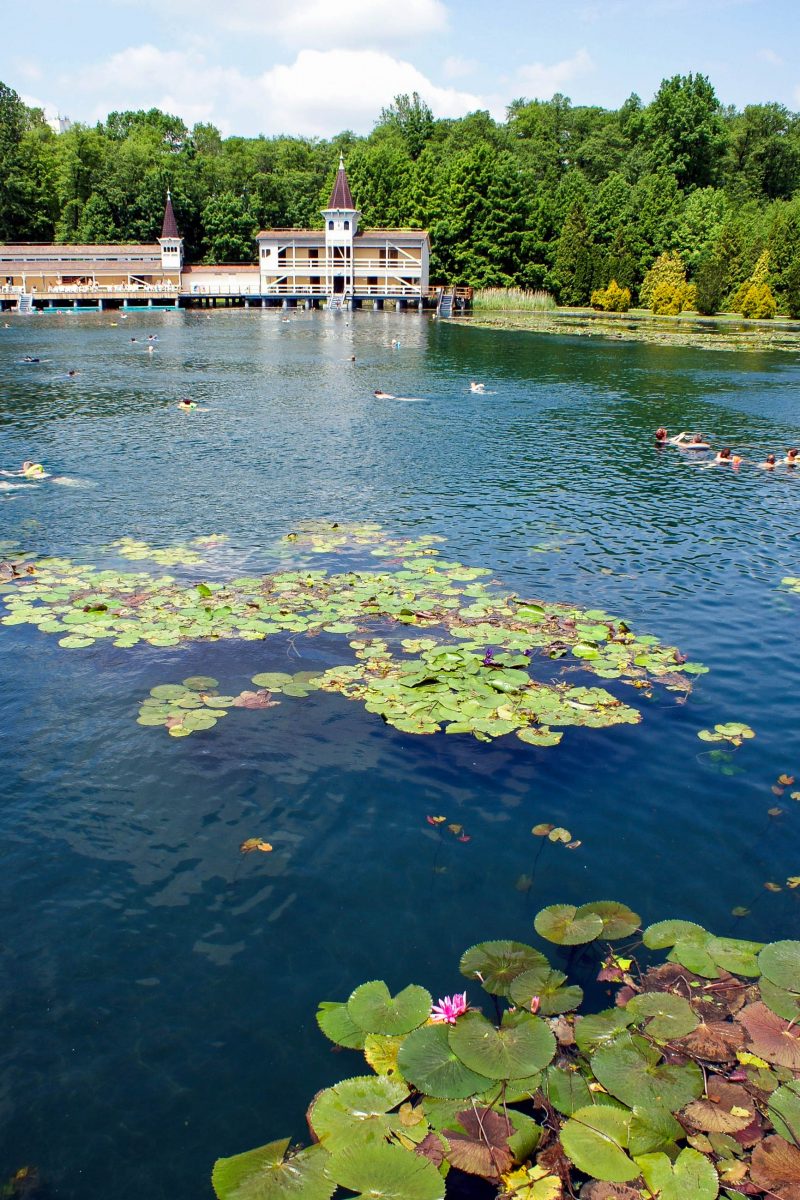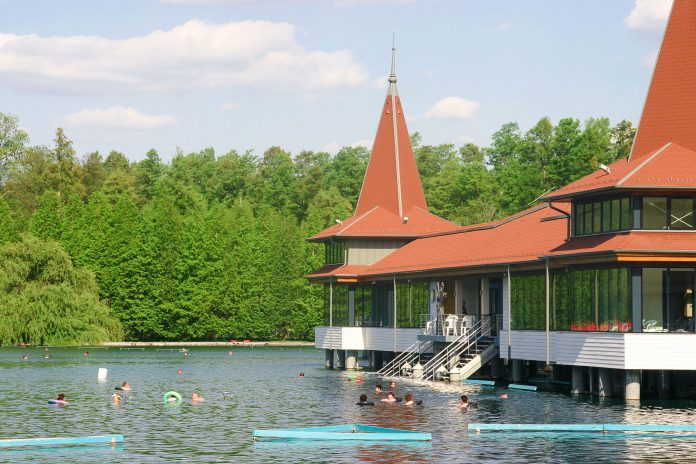Das Thermalbad im ungarischen Bad Hévíz wurde auf dem größten natürlichen Thermalsee der Welt erbaut. Seine Wassertemperatur fällt nie unter 22°C, wodurch seine entspannende und heilende Wirkung ganzjährig genossen werden kann.
Der Kurort Hévíz verdankt seine Berühmtheit dem über 4 Hektar großen Thermalsee, der als größter und heilendster See in ganz Europa gilt und der größte natürliche Thermalsee der Welt ist. Gemeinsam mit den anderen Thermalbädern – davon hat Ungarn die meisten Europas – zählt Hévíz zu unseren Top 10 Sehenswürdigkeiten von Ungarn.
Inhaltsverzeichnis
Wie kommt man am besten nach Hévíz?
Hévíz liegt im Westen Ungarns in der Provinz Zala etwa 5km nordwestlich des Balaton (Plattensees). Die Anreise nach Bad Heviz erfolgt am besten mit dem Auto, von Westen her kommend immer Richtung Plattensee/Balaton. Von Wien aus gibt es auch einen Bäderbus, der über einige weitere Bäder in Ungarn nach Hévíz fährt.
Badewannentemperatur im Winter

Der Thermalsee in Hévíz unterscheidet sich von anderen Heilquellen durch seinen schlammig-torfigen Untergrund, wohingegen andere Seen häufig Stein- oder Tonböden haben. Seine heiße Quelle am Grund des Sees besteht in einem Krater in 38m Tiefe und tauscht mit einer Ergiebigkeit von über 400 Liter pro Sekunde das Wasser im See innerhalb von 48 Stunden zur Gänze aus.
Durch die dichte Dunstschicht über der Wasseroberfläche fällt die Wassertemperatur im See nie unter 22°C und kann ganz ohne Heizung auch im Winter als Bad genutzt werden. Im Sommer hat das Wasser bis zu 35°C.
Neben der wohltuenden Wärme enthält das Thermalwasser von Hévíz noch wertvolle Mineralien, darunter Hydrogenkarbonat, Kalzium, Kohlendioxid, Magnesium, Schwefel und Radium. Aufgrund seiner leichten Radioaktivität sollte man sich im Wasser nicht länger als 20min aufhalten.
Das Heilwasser von Hévíz hilft vor allem gegen Rheuma und Erkrankungen des Bewegungsapparates und kann bei Verdauungsproblemen auch als Trinkkur verwendet werden. Die Dämpfe, die über der Wasseroberfläche entstehen, haben eine enstpannende Wirkung auf die Stimmbänder. Der schwefel- und radiumsalzhaltige Schlamm vom Grund des Sees wird für physiotherapeutische Behandlungen verwendet.
Heilquelle der alten Römer
Das heilende Wasser des Thermalsees wurde Münzfunden zufolge bereits vor 2.000 Jahren von den Römern genutzt. Auch die Germanen und Slawen wussten die wohltuende Wirkung des Wassers zu schätzen. 1328 wurde Hévíz das erste Mal urkundlich als „Locus vulgariter Hewyz dictus“ („Vom Volk Hewyz genannter Ort“) erwähnt.
Der heutige Kurbetrieb hat sich vor etwa 200 Jahren entwickelt, das erste Thermalbad entstand unter Graf Festetics, das heutige Hotel stammt aus den 1960er Jahren und wurde im Jahr 2006 erneuert. Im 5.500-Einwohner-Ort Bad Hévíz gibt es jede Menge zusätzliche Hotels und Pensionen, sowie einen Campingplatz, die mit der heilenden Wirkung ihres Thermalsees jährlich an die 900.000 Besucher anlocken.
Neben seiner heilenden und entspannenden Wirkung hat der Thermenort Bad Hévíz auch noch andere Highlights zu bieten. Inmitten von idyllischer Natur mit einer einzigartigen Flora und Fauna kann man auch außerhalb der heilenden Wasser die Seele baumeln lassen und die nette Atmosphäre und die schön gepflegten Parks des Städtchens genießen. Spaziergänge durch die Weinberge Westungarns lassen sich am besten mit einem romantischen Dinner am Abend abrunden.
Weiterführende Links:





